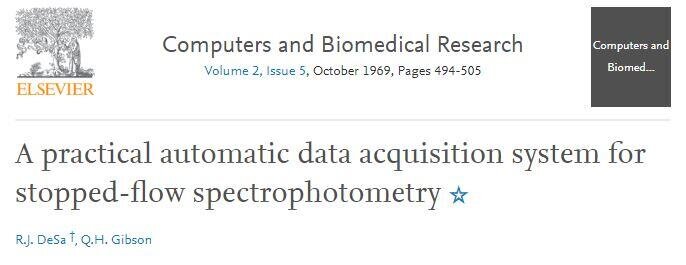Circularly Polarized Luminescence - The Facts
Circularly Polarized Luminescence - The Facts
Blog Article
The Basic Principles Of Uv/vis
Table of ContentsA Biased View of Circular DichroismThe Ultimate Guide To Spectrophotometers6 Easy Facts About Uv/vis ExplainedThe Basic Principles Of Circularly Polarized Luminescence An Unbiased View of Circular Dichroism

Spectrophotometry is a tool that hinges on the quantitative analysis of particles depending on how much light is taken in by colored substances.
Facts About Circularly Polarized Luminescence Revealed
A spectrophotometer is frequently utilized for the measurement of transmittance or reflectance of options, transparent or opaque solids, such as refined glass, or gases. Although numerous biochemicals are colored, as in, they take in noticeable light and for that reason can be measured by colorimetric treatments, even colorless biochemicals can typically be converted to colored compounds appropriate for chromogenic color-forming reactions to yield compounds appropriate for colorimetric analysis.: 65 Nevertheless, they can also be developed to determine the diffusivity on any of the listed light varieties that generally cover around 2002500 nm utilizing different controls and calibrations.
An example of an experiment in which spectrophotometry is used is the determination of the balance constant of a service. A certain chemical response within an option may take place in a forward and reverse instructions, where reactants form products and products break down into reactants. Eventually, this chain reaction will reach a point of balance called a balance point.
The 8-Minute Rule for Spectrophotometers
The quantity of light that travels through the option is a sign of the concentration of specific chemicals that do not enable light to go through. The absorption of light is because of the interaction of light with the electronic and vibrational modes of molecules. Each type of particle has an individual set of energy levels related to the makeup of its chemical bonds and nuclei and therefore will absorb light of particular wavelengths, or energies, leading to distinct spectral residential or commercial properties.
They are commonly used in lots of industries consisting of semiconductors, laser and optical manufacturing, printing and forensic evaluation, as well as in laboratories for the study of chemical compounds. Spectrophotometry is often used in measurements of enzyme activities, determinations of protein concentrations, determinations of enzymatic kinetic constants, and measurements of ligand binding reactions.: 65 Ultimately, a spectrophotometer is able to determine, depending on the control or calibration, what compounds are present in a target and exactly how much through estimations of observed wavelengths.
This would come as a solution to the formerly produced spectrophotometers which were unable to absorb the ultraviolet properly.
The smart Trick of Circularly Polarized Luminescence That Nobody is Talking About
It would be discovered that this did not provide satisfying outcomes, for that reason in Design B, there was a shift from a glass to a quartz prism which permitted better absorbance results - circular dichroism (http://go.bubbl.us/df2308/dba3?/New-Mind-Map). From there, Model C was born with a modification to the wavelength resolution which ended up having three units of it produced
It was produced from 1941 to 1976 where the cost for it in 1941 was US$723 (far-UV accessories were an option at extra cost). In the words of Nobel chemistry laureate Bruce Merrifield, it was "most likely the most essential instrument ever established towards the development of bioscience." Once it became stopped in 1976, Hewlett-Packard produced the very first commercially available diode-array spectrophotometer in 1979 understood as the HP 8450A. It irradiates the sample with polychromatic light which the sample takes in depending on its homes. It is transmitted back by grating the photodiode variety which discovers the wavelength area of the spectrum. Ever since, the creation and application of spectrophotometry gadgets has increased immensely and has actually turned into one of the most innovative instruments of our time.

Circular Dichroism Fundamentals Explained
The grating can either be movable or repaired.
In such systems, the grating is repaired and the strength of each wavelength of light is determined by a various detector in the range. When making transmission measurements, the spectrophotometer quantitatively compares the fraction of light that passes through a recommendation solution and a test option, then digitally compares the intensities of the two you could try these out signals and calculates the percentage of transmission of the sample compared to the recommendation standard.

Report this page